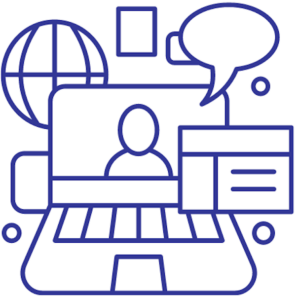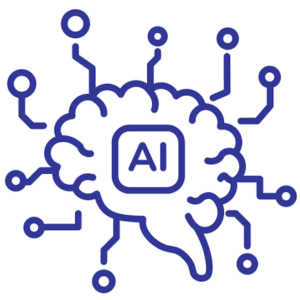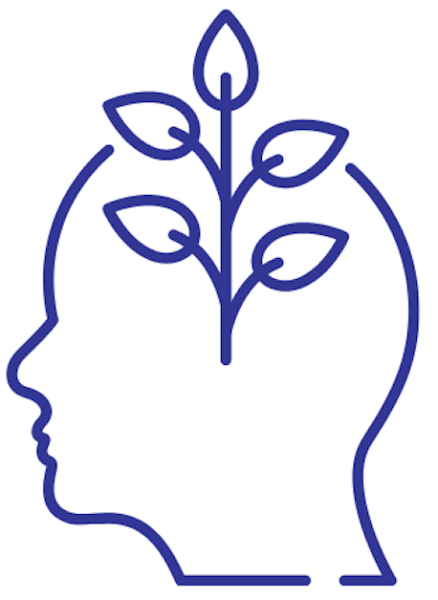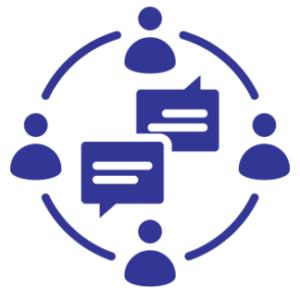Digital platforms enchance every child’s development
In today’s fast-paced digital world, technology has become an integral part of our daily lives, transforming how we work, communicate, and learn. For parents and educators, leveraging technology to support the development of preschoolers is not just a smart choice — it’s a necessity. By harnessing the power of digital and educational platforms, we can create engaging,  personalized, and effective learning experiences that cater to the unique needs of each child. This approach enhances cognitive and social-emotional development and prepares young learners for a future where digital literacy is paramount and quick adaptability is crucial.
personalized, and effective learning experiences that cater to the unique needs of each child. This approach enhances cognitive and social-emotional development and prepares young learners for a future where digital literacy is paramount and quick adaptability is crucial.
Personalized learning meets every child’s needs and interests
Personalized learning tailors educational content to meet the unique needs, interests, and learning pace of each child. This approach contrasts the one size and style fits all. Digital educational platforms help to achieve that by systematically monitoring, analyzing and evaluating every child’s development as a whole. So, data-driven platforms can help to track a child’s development progress over time from one day to years, providing valuable information about each child’s strengths, talents and areas for improvement. For example, if a child has done very well in mathematics, but art still needs some special attention, then the digital educational platform can recommend extra activities to do at home.  These technologies use algorithms and AI to create customized learning paths for every child. AI-driven adaptive learning platforms assess student data, including their performance, strengths, weaknesses, and learning pace. This means that the content, pace, and style of learning will be recommended by the platform which makes it easier to adapt to every child’s individual learning preferences.
These technologies use algorithms and AI to create customized learning paths for every child. AI-driven adaptive learning platforms assess student data, including their performance, strengths, weaknesses, and learning pace. This means that the content, pace, and style of learning will be recommended by the platform which makes it easier to adapt to every child’s individual learning preferences.
Each child has different learning styles
According to the VARK model, there are four main learning styles, in other words how children absorb, process, comprehend and retain information. For example, if a child is more of a visual learner then he or she might prefer learning through pictures, videos, graphics and maps. When a child prefers auditory learning he or she would like to absorb new information by taking part in discussions or listening to podcasts and music. On the other hand, some children prefer to learn through reading or writing. Lastly, some children are kinesthetic learners, who like to learn through real-life experiences and hands-on activities.  Which learning style is most suitable, depends on every child’s home environment, cognitive and emotional factors. It is important to note that everyone uses a mix of these styles, but most people have a dominant preference. Digital platforms can track and analyze a child’s engagement and performance across different types of activities. This data can highlight patterns and preferences, helping to tailor educational experiences to the child’s learning style and make learning more enjoyable and effective.
Which learning style is most suitable, depends on every child’s home environment, cognitive and emotional factors. It is important to note that everyone uses a mix of these styles, but most people have a dominant preference. Digital platforms can track and analyze a child’s engagement and performance across different types of activities. This data can highlight patterns and preferences, helping to tailor educational experiences to the child’s learning style and make learning more enjoyable and effective.
Stronger kindergarten and parent cooperation
Research suggests that the growth and maturation of young learners are intricately shaped by their experiences both at home and at kindergarten. The digital age has broadened communication opportunities, particularly in enhancing teacher-parent relationships and the family-kindergarten partnership. Digital educational platforms create an important opportunity to build strong cooperation and transparent communication between kindergarten and home – this way child’s development is seen as a whole. When educators and parents work together, they create a supportive and consistent learning environment that benefits the child both at kindergarten and at home.  Early education organization Väike Päike uses the learning information platform Kindiedays in their kindergartens and childcares, where teachers share pictures, videos, and descriptions of children’s day-to-day activities. Thanks to that, parents can see in real-time how their child is doing every day. In addition, teachers share updates about the child’s skills and knowledge progress and upcoming activities. Parents can then reinforce these lessons at home, ensuring continuity in the child’s learning experience. This involvement not only promotes the sharing of information and support for children’s early learning but also brings parents into the wider educational community.
Early education organization Väike Päike uses the learning information platform Kindiedays in their kindergartens and childcares, where teachers share pictures, videos, and descriptions of children’s day-to-day activities. Thanks to that, parents can see in real-time how their child is doing every day. In addition, teachers share updates about the child’s skills and knowledge progress and upcoming activities. Parents can then reinforce these lessons at home, ensuring continuity in the child’s learning experience. This involvement not only promotes the sharing of information and support for children’s early learning but also brings parents into the wider educational community.
DigiLa – we identify and support the discovery of each child’s potential
Next academic year (2024/2025), we will take a step forward by implementing the digital and interactive learning platform DigiLa in early childhood organization’s Väike Päike kindergartens and daycare centers. This platform allows us to analyze, monitor, and assess each child’s development as a whole. DigiLa approaches each child’s development personally, based on their pace, strengths, and needs.  The child’s daily learning activities are visible on the platform: which skills were supported and how the child was doing. Based on the data entered into DigiLa, parents can see their child’s development in real time. Through systematic monitoring and AI data analysis, your child’s “superpower” in areas such as art, music, mathematics, or other fields may emerge. DigiLa provides the opportunity to discover and recognize a child’s potential already in the preschool years and act accordingly.
The child’s daily learning activities are visible on the platform: which skills were supported and how the child was doing. Based on the data entered into DigiLa, parents can see their child’s development in real time. Through systematic monitoring and AI data analysis, your child’s “superpower” in areas such as art, music, mathematics, or other fields may emerge. DigiLa provides the opportunity to discover and recognize a child’s potential already in the preschool years and act accordingly.
Resources:
- Hase, A. & Kuhl, P. (2024). Teachers’ use of data from digital learning platforms for instructional design: a systematic review. Education Tech Research Dev, https://doi.org/10.1007/s11423-024-10356-y
- Cherry, K. (2023). Overview of VARK Learning Styles, https://www.verywellmind.com/vark-learning-styles-2795156
- Hsu, P-C. & Chen, R-S. (2023). Analyzing the Mechanisms by Which Digital Platforms Influence Family-School Partnerships among Parents of Young Children, https://doi.org/10.3390/su152416708
- Johnson, R. (2023). Adaptive Learning: Personalized Education In The Digital Age, https://elearningindustry.com/adaptive-learning-personalized-education-in-the-digital-age
- Chen, S.Y. & Wang, JH. (2020). Individual differences and personalized learning: a review and appraisal, https://doi.org/10.1007/s10209-020-00753-4
- Meehirr, K. (2024). How AI Is Personalizing Education For Every Student, https://elearningindustry.com/how-ai-is-personalizing-education-for-every-student

